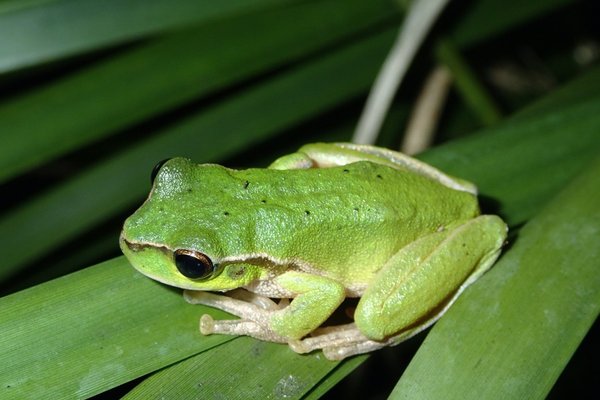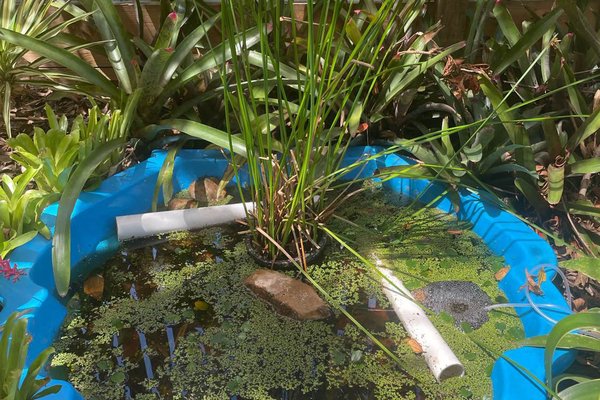It’s CSI – frogs edition and we need you!
Check your frog photos for frog-biting flies and submit them to our study to help us develop a new, DNA based frog detection method.

A green tree frog (Litoria caerulea) being attacked by mosquitos.
Image: Lachlan Pettit.© Lachlan Pettit.
Rare frogs can be very hard to find during traditional scientific expeditions, and it turns out the best way to detect some species might be through their parasites. Recently I published an experiment in which I did just that. I need your help to keep developing this new technique. Specifically, I need you to go through your frog photos, and keep your eyes peeled next time you see a frog!
Understanding how species are distributed is important for informing biodiversity conservation, but for some species, it can be the biggest hurdle. Species that are rare or cryptic can be easily missed by searching biologists. Recently, I attempted to increase the detectability of frog species by enlisting the help of frog-biting flies – tiny, bloodsucking parasites that follow the sound of frogs’ calls. I played frog calls to attract flies, sequenced the DNA in their blood meals (coined invertebrate-derived DNA, or iDNA), and forensically established that threatened frogs were in the area through the DNA sequences more effectively than when searching for frogs directly.

A frog-biting midge (Corethrella sp.) with visible frog blood meal.
Image: John Martin.© John Martin.
iDNA has the potential to become a standard frog survey technique and help in the discovery of new species or even the rediscovery of species thought to be extinct, so I want to continue developing techniques for frog iDNA surveys. However, there is still so much we don’t yet know about how frogs and flies interact. It’s unlikely that all frogs are equally parasitised. Some frogs have natural insect repellents, while others can swat flies away. The flies themselves can be choosy about the types of sounds they’re attracted to, and probably aren’t evenly abundant everywhere. Because of this, what makes a good candidate frog species for detection through iDNA is, for now, anyone’s guess.

A moth fly (Sycorax sp.) ‘sampling’ DNA from a common mist frog (Litoria rheocola), an endangered species.
Image: Jakub Hodáň.© Jakub Hodáň.
I plan to home in on what combinations of characteristics make a frog species a likely target for frog-biting flies. To do this, I will comb through photographs of frogs everywhere from iNaturalist to Google Images, looking for interactions between frogs and frog-biting flies. As these flies are so small, people tend not to realise they’ve even photographed one, so not many are published and most published examples are simply incidental.
THAT’S WHERE YOU COME IN
If you’ve photographed frogs in Australia and are over 18, I’d love for you to closely examine your pictures, looking for any frogs that have flies, midges, or mosquitos sitting on them. If you find flies, midges or mosquitos in direct contact with frogs in any of your photos, please share them by submitting the photo and answering a few questions about it here. It doesn’t matter if it’s a rare frog on a mountain or a common one in your backyard – every observation will help! If you’re going out taking new photos, it’s good to remember there’s no need to touch or disturb the frog to get a useful shot – in fact, any parasites would likely fly away if disturbed! The power of collective action can be amazing for science, and with your help, we can kickstart a new era of improved detection, and therefore conservation, of our amazing amphibian diversity.
Timothy Cutajar, PhD Candidate, Herpetology; UNSW Sydney, Australian Museum Research Institute and University of Copenhagen.
More information:
- Cutajar, T.P. and Rowley, J.J.L. (2020) Surveying frogs from the bellies of their parasites: invertebrate-derived DNA as a novel survey method for frogs. Global Ecology & Conservation. e00978. https://doi.org/10.1016/j.gecco.2020.e00978













